
- Offer Profile
-
VIGO System S.A. is a world’s leading manufacturer of standard and customized high-tech uncooled photodetectors of middle and long wavelength range. In the 80s, at the Military Technical Academy, a team led by prof. dr. hab. Joseph Piotrowski developed a unique technology for the production of detectors working without cryogenic cooling and then implemented it into a newly created company. In the 80s, at the Military Technical Academy, a team led by prof. dr. hab. Joseph Piotrowski developed a unique technology for the production of detectors working without cryogenic cooling and then implemented it into a newly created company.
Detectors produced in VIGO are used in various areas such as:
- Industry– laser power control and calibration;
- Defense and security– smart munitions, early warning systems;
- Environmental protection – gas analysis, real-time water quality control;
- Healthcare – non-invasive blood analysis;
- Transport – analysis of temperature distribution in fast moving objects;
- Research and development – precise, non-destructive spectroscopy.
Infrared Detectors

- Detectors based on HgCdTe material that offer the highest performance out of all discovered materials suitable for Infrared detection. Our detectors are optimized for MWIR (3-8μm) and LWIR (8-16μm) spectral ranges. It is perfect for creating gas sensors for industry and environmental protection. They are an ideal solution for CRDS, TDLAS or FTIR spectroscopy. Very high parameters of detection and speed of operation make them ideal for applications such as leak detection, transport safety or defense applications. We also offer InAs or InAsSb based detectors that are RoHS compliant and suitable for the consumer market.
HgCdTe (MCT) photovoltaic detectors

- Photovoltaic detectors (photodiodes) are semiconductor structures with one (PV) or multiple (PVM) , homo- or heterojunctions. Absorbed photons produce charge carriers that are collected at the contacts, resulting in external photocurrent. Photodiodes have complex current voltage characteristics. The devices can operate either at flicker-free zero bias or with reverse voltage. Reverse bias voltage is frequently applied to increase responsivity, differential resistance, reduce the shot noise, improve high frequency performance and increase the dynamic range.
Selected Lines

HgCdTe (MCT) Photovoltaic Detector
-
2.4 – 5.5 µm, ambient temperature, optically immersed
PVI-5-1×1-TO39-NW-36 is uncooled IR photovoltaic detector based on sophisticated HgCdTe heterostructure for the best performance and stability. The device is optimized for the maximum performance at λopt = 5 µm. Detector element is monolithically integrated with hyperhemispherical GaAs microlens in order to improve performance of the device. Reverse bias Vb may significantly increase response speed and dynamic range. It also results in improved performance at high frequencies, but 1/f noise that appears in biased devices may reduce performance at low frequencies.

HgCdTe (MCT) Photovoltaic Detector
-
2.4 – 4.5 µm, ambient temperature, optically immersed
PVI-4-1×1-TO39-NW-36 is uncooled IR photovoltaic detector based on sophisticated HgCdTe heterostructure for the best performance and stability. The device is optimized for the maximum performance at 4 µm. Detector element is monolithically integrated with hyperhemispherical GaAs microlens in order to improve performance of the device. Reverse bias may significantly increase response speed and dynamic range. It also results in improved performance at high frequencies, but 1/f noise that appears in biased devices may reduce performance at low frequencies.

HgCdTe (MCT) Photovoltaic Detector
-
2.4 – 4.3 µm, ambient temperature, optically immersed
PVI-2TE-4-1×1-TO8-wAl2O3-36 is two-stage thermoelectrically cooled IR photovoltaic detector based on sophisticated HgCdTe heterostructure for the best performance and stability. The device is optimized for the maximum performance at λopt = 4.0 µm. Detector element is monolithically integrated with hyperhemispherical GaAs microlens in order to improve performance of the device. Reverse bias Vb may significantly increase response speed and dynamic range. It also results in improved performance at high frequencies, but 1/f noise that appears in biased devices may reduce performance at low frequencies. 3° wedged sapphire (wAl2O3) window prevents unwanted interference effects.

HgCdTe (MCT) Photovoltaic Detector
-
2.9 – 5.5 µm, ambient temperature, optically immersed
PVI-2TE-5-1×1-TO8-wAl2O3-36 is two-stage thermoelectrically cooled IR photovoltaic detector based on sophisticated HgCdTe heterostructure for the best performance and stability. The device is optimized for the maximum performance at λopt = 5.0 µm. Detector element is monolithically integrated with hyperhemispherical GaAs microlens in order to improve performance of the device. Reverse bias Vb may significantly increase response speed and dynamic range. It also results in improved performance at high frequencies, but 1/f noise that appears in biased devices may reduce performance at low frequencies. 3° wedged sapphire (wAl2O3) window prevents unwanted interference effects.

HgCdTe (MCT) Photovoltaic Detector
-
3.0 – 6.7 µm, ambient temperature, optically immersed
PVI-2TE-6-1×1-TO8-wZnSeAR-36 is two-stage thermoelectrically cooled IR photovoltaic detector based on sophisticated HgCdTe heterostructure for the best performance and stability. The device is optimized for the maximum performance at λopt = 6 µm. Detector element is monolithically integrated with hyperhemispherical GaAs microlens in order to improve performance of the device. Reverse bias Vb may significantly increase response speed and dynamic range. 3° wedged zinc selenide anti-reflection coated (wZnSeAR) window prevents unwanted interference effects.

HgCdTe (MCT) Photovoltaic Detector
-
3.0 – 6.9 µm, ambient temperature, optically immersed
PVI-4TE-6-1×1-TO8-wZnSeAR-36 is four-stage thermoelectrically cooled IR photovoltaic detector based on sophisticated HgCdTe heterostructure for the best performance and stability. The device is optimized for the maximum performance at λopt = 6 µm. Detector element is monolithically integrated with hyperhemispherical GaAs microlens in order to improve performance of the device. Reverse bias Vb may significantly increase response speed and dynamic range. 3° wedged zinc selenide anti-reflection coated (wZnSeAR) window prevents unwanted interference effects.

HgCdTe (MCT) Photovoltaic Detector
-
2.0 – 12.0 µm, ambient temperature, multiple junction
PVM-10.6-1×1-TO39-NW-90 is uncooled IR photovoltaic multiple junction detector based on sophisticated HgCdTe heterostructure for the best performance and stability. The device is designed for the maximum performance at λopt = 10.6 µm and especially useful as a large active area detector to detect CW and low frequency modulated radiation.

HgCdTe (MCT) Photovoltaic Detector
-
2.0 – 12.0 µm, two-stage thermoelectrically cooled, multiple junction
PVM-2TE-10.6-1×1-TO8-wZnSeAR-70 is two-stage thermoelectrically cooled IR photovoltaic multiple junction detector based on sophisticated HgCdTe heterostructure for the best performance and stability. The device is designed for the maximum performance at λopt = 10.6 µm and especially useful as a large active area detector to detect CW and low frequency modulated radiation. 3° wedged zinc selenide anti-reflection coated (wZnSeAR) window prevents unwanted interference effects.

HgCdTe (MCT) Photovoltaic Detector
-
2.0 – 12.0 µm, ambient temperature, multiple junction
PEM-10.6-2×2-PEM-SMA-wZnSeAR-48 is uncooled IR photovoltaic multiple junction HgCdTe detector based on photelectromagnetic effect in the semiconductor – spatial separation of optically generated electrons and holes in the magnetic field. This device is designed for the maximum performance at λopt = 10.6 µm and especially useful as a large active area detector to detect CW and low frequency modulated radiation. This device is mounted in specialized package with incorporated magnetic circuit inside and SMA signal output connector. 3° wedged zinc selenide anti-reflection coated window prevents unwanted interference effects and protects against pollution.
All HgCdTe (MCT) photovoltaic detectors
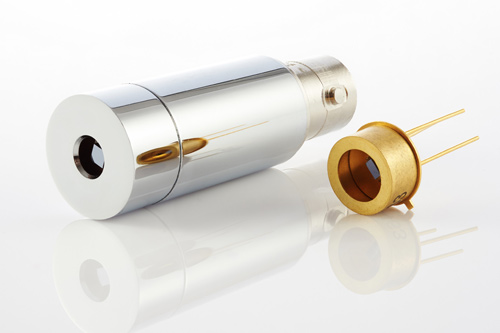
PV
-
3-8 μm IR PHOTOVOLTAIC DETECTORS
The PV-λopt photodetectors series (λopt – optimal wavelength in micrometers) feature IR photovoltaic detector.This series is easy to use, no cooling or heatsink needed. The devices are optimized for the maximum performance at λopt. Cut-on wavelength can be optimized upon request. Reverse bias may significantly increase speed of response and dynamic range. It results also in improved performance at high frequencies, but 1/f noise that appears in biased devices may reduce performance at low frequencies. Highest performance and stability are achieved by application of variable gap HgCdTe semiconductor, optimized doping and sophisticated surface processing. Standard detectors are available in TO39 or BNC packages without windows. Various windows, other packages and connectors are available upon request.
- PV-3: Optimal wavelength λopt: 3.0µm, Detectivity D*(λopt): ≥6.5x109cm·Hz1/2/W, Time constant τ: ≤350ns
- PV-3.4: Optimal wavelength λopt: 3.4µm, Detectivity D*(λopt): ≥5.0x10cm·Hz1/2/W9, Time constant τ: ≤260ns
- PV-4: Optimal wavelength λopt: 4.0µm, Detectivity D*(λopt): ≥3.0x109cm·Hz1/2/W, Time constant τ: ≤150ns
- PV-5: Optimal wavelength λopt: 5.0µm, Detectivity D*(λopt): ≥1.0x109cm·Hz1/2/W, Time constant τ: ≤120ns
- PV-6: Optimal wavelength λopt: 6.0µm, Detectivity D*(λopt): ≥5.0x108cm·Hz1/2/W, Time constant τ: ≤80ns

PV-2TE
-
2-12 μm IR PHOTOVOLTAIC DETECTORS THERMOELECTRICALLY COOLED
The PV-2TE-λopt photodetectors series (λopt - optimal wavelength in micrometers) feature IR photovoltaic detector on two-stage thermoelectrical cooler. The devices are optimized for the maximum performance at λopt. Cut-on wavelength can be optimized upon request. Reverse bias may significantly increase speed of response and dynamic range. It results also in improved performance at high frequencies, but 1/f noise that appears in biased devices may reduce performance at low frequencies. Highest performance and stability are achieved by application of variable gap HgCdTe semiconductor, optimized doping and sophisticated surface processing. Custom devices with quadrant cells, multielement arrays, different windows, lenses and optical filters are available upon request. Standard detectors are available in TO8 packages with wAl2O3 or wZnSeAR windows. Other packages, windows and connectors are also available.
- PV-2TE-3: Optimal wavelength λopt: 3.0µm, Detectivity D*(λopt): ≥7.0x1010cm·Hz1/2/W, Time constant τ: ≤280ns
- PV-2TE-3.4: Optimal wavelength λopt: 3.4µm, Detectivity D*(λopt): ≥4.0x1010cm·Hz1/2/W, Time constant τ: ≤200ns
- PV-2TE-4: Optimal wavelength λopt: 4.0µm, Detectivity D*(λopt): ≥3.0x1010cm·Hz1/2/W, Time constant τ: ≤100ns
- PV-2TE-5: Optimal wavelength λopt: 5.0µm, Detectivity D*(λopt): ≥9.0x109cm·Hz1/2/W, Time constant τ: ≤80ns
- PV-2TE-6: Optimal wavelength λopt: 6.0µm, Detectivity D*(λopt): ≥2.0x109cm·Hz1/2/W, Time constant τ: ≤50ns
- PV-2TE-8: Optimal wavelength λopt: 8.0µm, Detectivity D*(λopt): ≥2.0x108cm·Hz1/2/W, Time constant τ: ≤45ns
- PV-2TE-10.6: Optimal wavelength λopt: 10.6µm, Detectivity D*(λopt): ≥1.0x108cm·Hz1/2/W, Time constant τ: ≤10ns

PV-3TE
-
1-15 μm THREE-STAGE THERMOELECTRICALLY COOLED PHOTOCONDUCTIVE DETECTORS
PC-3TE series features three-stage thermoelectrically cooled IR photoconductive detectors based on sophisticated HgCdTe heterostructures for the best performance and stability. The devices are optimized for the maximum performance at λopt. The devices should operate in optimum bias voltage and current readout mode. Performance at low frequencies is reduced due to 1/f noise. The 1/f noise corner frequency increases with the cut-off wavelength. 3° wedged zinc selenide anti-reflection coated (wZnSeAR) window prevents unwanted interference effects.
- PV-3TE-3: Optimal wavelength λopt: 3.0µm, Detectivity D*(λopt): ≥1.0x1011cm·Hz1/2/W, Time constant τ: ≤280ns
- PV-3TE-3.4: Optimal wavelength λopt: 3.4µm, Detectivity D*(λopt): ≥7.0x1010cm·Hz1/2/W, Time constant τ: ≤200ns
- PV-3TE-4: Optimal wavelength λopt: 4.0µm, Detectivity D*(λopt): ≥4.0x1010cm·Hz1/2/W, Time constant τ: ≤100ns
- PV-3TE-5: Optimal wavelength λopt: 5.0µm, Detectivity D*(λopt): ≥1.0x1010cm·Hz1/2/W, Time constant τ: ≤80ns
- PV-3TE-6: Optimal wavelength λopt: 6.0µm, Detectivity D*(λopt): ≥4.0x109cm·Hz1/2/W, Time constant τ: ≤50ns
- PV-3TE-8: Optimal wavelength λopt: 8.0µm, Detectivity D*(λopt): ≥3.0x108cm·Hz1/2/W, Time constant τ: ≤45ns
- PV-3TE-10.6: Optimal wavelength λopt: 10.6µm, Detectivity D*(λopt): ≥1.5x108cm·Hz1/2/W, Time constant τ: ≤10ns

PV-4TE
-
1.0 – 16.0 µm HgCdTe FOUR-STAGE THERMOELECTRICALLY COOLED PHOTOCONDUCTIVE DETECTORS
PC-4TE series features four-stage thermoelectrically cooled IR photoconductive detectors based on sophisticated HgCdTe heterostructures for the best performance and stability. The devices are optimized for the maximum performance at λopt. The devices should operate in optimum bias voltage and current readout mode. Performance at low frequencies is reduced due to 1/f noise. The 1/f noise corner frequency increases with the cut-off wavelength. 3° wedged zinc selenide anti-reflection coated (wZnSeAR) window prevents unwanted interference effects.
- PV-4TE-3: Optimal wavelength λopt: 3.0µm, Detectivity D*(λopt): ≥1.5x1011cm·Hz1/2/W, Time constant τ: ≤280ns
- PV-4TE-3.4: Optimal wavelength λopt: 3.4µm, Detectivity D*(λopt): ≥1.0x1011cm·Hz1/2/W, Time constant τ: ≤200ns
- PV-4TE-4: Optimal wavelength λopt: 4.0µm, Detectivity D*(λopt): ≥6.0x1010cm·Hz1/2/W, Time constant τ: ≤100ns
- PV-4TE-5: Optimal wavelength λopt: 5.0µm, Detectivity D*(λopt): ≥1.5x1010cm·Hz1/2/W, Time constant τ: ≤80ns
- PV-4TE-6: Optimal wavelength λopt: 6.0µm, Detectivity D*(λopt): ≥5.0x109cm·Hz1/2/W, Time constant τ: ≤50ns
- PV-4TE-8: Optimal wavelength λopt: 8.0µm, Detectivity D*(λopt): ≥4.0x108cm·Hz1/2/W, Time constant τ: ≤45ns
- PV-4TE-10.6: Optimal wavelength λopt: 10.6µm, Detectivity D*(λopt): ≥2.0x108cm·Hz1/2/W, Time constant τ: ≤25ns

PVI
-
2-8 μm IR PHOTOVOLTAIC DETECTORS OPTICALLY IMMERSED
The PVI-λopt photodetectors series (λopt - optimal wavelength in micrometers) feature IR photovoltaic detector, optically immersed to high refractive index GaAs hyperhemispherical (standard) or hemispherical or any intermediate lens (as option) for different acceptance angle and saturation level. This series is easy to use, no cooling or heatsink needed. The devices are optimized for the maximum performance at λopt. Cut-on wavelength can be optimized upon request. Reverse bias may significantly increase speed of response and dynamic range. It results also in improved performance at high frequencies, but 1/f noise that appears in biased devices may reduce performance at low frequencies. Highest performance and stability are achieved by application of variable gap HgCdTe semiconductor, optimized doping and sophisticated surface processing. Standard detectors are available in TO39 or BNC packages without windows. Various windows, other packages and connectors are available upon request.
Uncooled, Immersion: Yes
- PVI-3: Optimal wavelength λopt: 3.0µm, Detectivity D*(λopt): ≥5.0x1010cm·Hz1/2/W, Time constant τ: ≤350ns
- PVI-3.4: Optimal wavelength λopt: 3.4µm, Detectivity D*(λopt): ≥4.5x1010cm·Hz1/2/W, Time constant τ: ≤260ns
- PVI-4: Optimal wavelength λopt: 4.0µm, Detectivity D*(λopt): ≥2.0x1010cm·Hz1/2/W, Time constant τ: ≤150ns
- PVI-5: Optimal wavelength λopt: 5.0µm, Detectivity D*(λopt): ≥9.0x1010cm·Hz1/2/W, Time constant τ: ≤120ns
- PVI-6: Optimal wavelength λopt: 6.0µm, Detectivity D*(λopt): ≥4.0x109cm·Hz1/2/W, Time constant τ: ≤80ns
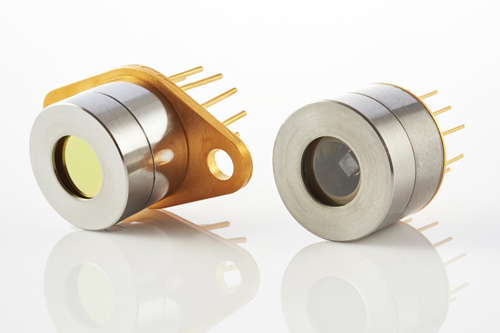
PVI-2TE
-
2-12 μm IR PHOTOVOLTAIC DETECTORS THERMOELECTRICALLY COOLED OPTICALLY IMMERSED
The PVI-2TE-λopt photodetectors series (λopt - optimal wavelength in micrometers) feature IR photovoltaic detector on two-stage thermoelectrical cooler, optically immersed to high refractive index GaAs hyperhemispherical (standard) or hemispherical or any intermediate lens (as option) for different acceptance angle and saturation level. The devices are optimized for the maximum performance at λopt. Cut-on wavelength can be optimized upon request. Reverse bias may significantly increase speed of response and dynamic range. It results also in improved performance at high frequencies, but 1/f noise that appears in biased devices may reduce performance at low frequencies. Highest performance and stability are achieved by application of variable gap HgCdTe semiconductor, optimized doping and sophisticated surface processing. Custom devices with quadrant cells, multielement arrays, different windows, lenses and optical filters are available upon request. Standard detectors are available in TO8 packages with wAl2O3 or wZnSeAR windows. Other packages, windows and connectors are also available.
Two-stage TE cooled, Immersion: Yes
- PVI-2TE-3: Optimal wavelength λopt: 3.0µm, Detectivity D*(λopt): ≥5.5x1011cm·Hz1/2/W, Time constant τ: ≤280ns
- PVI-2TE-3.4: Optimal wavelength λopt: 3.4µm, Detectivity D*(λopt): ≥3.0x1011cm·Hz1/2/W, Time constant τ: ≤200ns
- PVI-2TE-4: Optimal wavelength λopt: 4.0µm, Detectivity D*(λopt): ≥2.0x1011cm·Hz1/2/W, Time constant τ: ≤100ns
- PVI-2TE-5: Optimal wavelength λopt: 5.0µm, Detectivity D*(λopt): ≥6.0x1010cm·Hz1/2/W, Time constant τ: ≤80ns
- PVI-2TE-6: Optimal wavelength λopt: 6.0µm, Detectivity D*(λopt): ≥2.0x1010cm·Hz1/2/W, Time constant τ: ≤50ns
- PVI-2TE-8: Optimal wavelength λopt: 8.0µm, Detectivity D*(λopt): ≥2.0x109cm·Hz1/2/W, Time constant τ: ≤45ns
- PVI-2TE-10.6: Optimal wavelength λopt: 10.6µm, Detectivity D*(λopt): ≥1.0x1010cm·Hz1/2/W, Time constant τ: ≤10ns

PVI-3TE
-
2-12 μm IR PHOTOVOLTAIC DETECTORS THERMOELECTRICALLY COOLED OPTICALLY IMMERSED
The PVI-3TE-λopt photodetectors series (λopt - optimal wavelength in micrometers) feature IR photovoltaic detector on three-stage thermoelectrical cooler, optically immersed to high refractive index GaAs hyperhemispherical (standard) or hemispherical or any intermediate lens (as option) for different acceptance angle and saturation level. The devices are optimized for the maximum performance at λopt. Cut-on wavelength can be optimized upon request. Reverse bias may significantly increase speed of response and dynamic range. It results also in improved performance at high frequencies, but 1/f noise that appears in biased devices may reduce performance at low frequencies. Highest performance and stability are achieved by application of variable gap HgCdTe semiconductor, optimized doping and sophisticated surface processing. Custom devices with quadrant cells, multielement arrays, different windows, lenses and optical filters are available upon request. Standard detectors are available in TO8 packages with wAl2O3 or wZnSeAR windows. Other packages, windows and connectors are also available.
- PVI-3TE-3: Optimal wavelength λopt: 3.0µm, Detectivity D*(λopt): ≥7.0x1011cm·Hz1/2/W, Time constant τ: ≤280ns
- PVI-3TE-3.4: Optimal wavelength λopt: 3.4µm, Detectivity D*(λopt): ≥5.0x1011cm·Hz1/2/W, Time constant τ: ≤200ns
- PVI-3TE-4: Optimal wavelength λopt: 4.0µm, Detectivity D*(λopt): ≥3.0x1011cm·Hz1/2/W, Time constant τ: ≤100ns
- PVI-3TE-5: Optimal wavelength λopt: 5.0µm, Detectivity D*(λopt): ≥8.0x1010cm·Hz1/2/W, Time constant τ: ≤80ns
- PVI-3TE-6: Optimal wavelength λopt: 6.0µm, Detectivity D*(λopt): ≥3.0x1010cm·Hz1/2/W, Time constant τ: ≤50ns
- PVI-3TE-8: Optimal wavelength λopt: 8.0µm, Detectivity D*(λopt): ≥3.0x109cm·Hz1/2/W, Time constant τ: ≤45ns
- PVI-3TE-10.6: Optimal wavelength λopt: 10.6µm, Detectivity D*(λopt): ≥1.5x109cm·Hz1/2/W, Time constant τ: ≤10ns

PVI-4TE
-
2-12 μm IR PHOTOVOLTAIC DETECTORS THERMOELECTRICALLY COOLED OPTICALLY IMMERSED
The PVI-4TE-λopt photodetectors series (λopt - optimal wavelength in micrometers) feature IR photovoltaic detector on four-stage thermoelectrical cooler, optically immersed to high refractive index GaAs hyperhemispherical (standard) or hemispherical or any intermediate lens (as option) for different acceptance angle and saturation level. The devices are optimized for the maximum performance at λopt. Cut-on wavelength can be optimized upon request. Reverse bias may significantly increase speed of response and dynamic range. It results also in improved performance at high frequencies, but 1/f noise that appears in biased devices may reduce performance at low frequencies. Highest performance and stability are achieved by application of variable gap HgCdTe semiconductor, optimized doping and sophisticated surface processing. Custom devices with quadrant cells, multielement arrays, different windows, lenses and optical filters are available upon request. Standard detectors are available in TO8 packages with wAl2O3 or wZnSeAR windows. Other packages, windows and connectors are also available.
- PVI-4TE-3: Optimal wavelength λopt: 3.0µm, Detectivity D*(λopt): ≥8.0x1011cm·Hz1/2/W, Time constant τ: ≤280ns
- PVI-4TE-3.4: Optimal wavelength λopt: 3.4µm, Detectivity D*(λopt): ≥7.0x1011cm·Hz1/2/W, Time constant τ: ≤200ns
- PVI-4TE-4: Optimal wavelength λopt: 4.0µm, Detectivity D*(λopt): ≥4.0x1011cm·Hz1/2/W, Time constant τ: ≤100ns
- PVI-4TE-5: Optimal wavelength λopt: 5.0µm, Detectivity D*(λopt): ≥1.0x1011cm·Hz1/2/W, Time constant τ: ≤80ns
- PVI-4TE-6: Optimal wavelength λopt: 6.0µm, Detectivity D*(λopt): ≥4.0x1010cm·Hz1/2/W, Time constant τ: ≤50ns
- PVI-4TE-8: Optimal wavelength λopt: 8.0µm, Detectivity D*(λopt): ≥4.0x109cm·Hz1/2/W, Time constant τ: ≤45ns
- PVI-4TE-10: Optimal wavelength λopt: 10.6µm, Detectivity D*(λopt): ≥2.0x109cm·Hz1/2/W, Time constant τ: ≤25ns
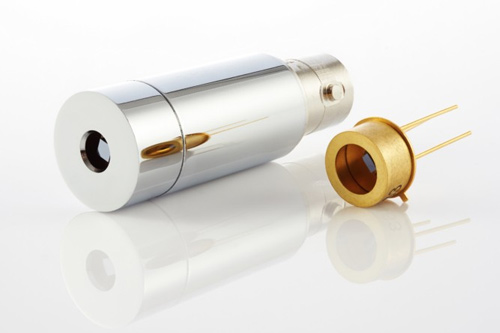
PVM
-
8-11 μm IR PHOTOVOLTAIC MULTIPLE JUNCTION DETECTORS
The PVM-λopt photodetectors series (λopt - optimal wavelength in micrometers) feature IR multiple junction photovoltaic detector. The devices are optimized for the maximum performance at λopt. Highest performance and stability are achieved by application of variable gap HgCdTe semiconductor, optimized doping and sophisticated surface processing. Standard detectors are available in TO39 or BNC packages without windows. Various windows, other packages and connectors are available upon request
- PVM-8: Optimal wavelength λopt: 8.0µm, Detectivity D*(λopt): ≥6.5x107cm·Hz1/2/W, Time constant τ: ≤4ns
- PVM-10.6: Optimal wavelength λopt: 10.6µm, Detectivity D*(λopt): ≥1.0x107cm·Hz1/2/W, Time constant τ: ≤1.5ns

PVM-2TE
-
8-11 μm IR PHOTOVOLTAIC MULTIPLE JUNCTION DETECTORS THERMOELECTRICALLY COOLED
The PVM-2TE-λopt photodetectors series (λopt - optimal wavelength in micrometers) feature IR multiple junction photovoltaic detector on two-stage thermoelectrical cooler.
The devices are optimized for the maximum performance at λopt, large area devices. Highest performance and stability are achieved by application of variable gap HgCdTe semiconductor, optimized doping and sophisticated surface processing. Custom devices with quadrant cells, multielement arrays, different windows, lenses and optical filters are available upon request. Standard detectors are available in TO8 packages with wZnSeAR windows. Other packages, windows and connectors are also available..- PVM-2TE-8: Optimal wavelength λopt: 8.0µm, Detectivity D*(λopt): ≥3.0x108cm·Hz1/2/W, Time constant τ: ≤4ns
- PVM-2TE-10.6: Optimal wavelength λopt: 10.6µm, Detectivity D*(λopt): ≥1.0x108cm·Hz1/2/W, Time constant τ: ≤3ns

PVMI
-
8-11 μm IR PHOTOVOLTAIC MULTIPLE JUNCTION DETECTORS OPTICALLY IMMERSED
The PVMI-λopt photodetectors series (λopt - optimal wavelength in micrometers) feature IR multiple junction optically immersed photovoltaic detector.
The devices are optimized for the maximum performance at λopt. Highest performance and stability are achieved by application of variable gap HgCdTe semiconductor, optimized doping and sophisticated surface processing. Standard detectors are available in TO39 or BNC packages without windows. Various windows, other packages and connectors are available upon request.- PVMI-8: Optimal wavelength λopt: 8.0µm, Detectivity D*(λopt): ≥3.0x108cm·Hz1/2/W, Time constant τ: ≤4ns
- PVMI-10.6: Optimal wavelength λopt: 10.6µm, Detectivity D*(λopt): ≥1.0x108cm·Hz1/2/W, Time constant τ: ≤1.5ns

PVMI-2TE
-
8-11 μm IR PHOTOVOLTAIC MULTIPLE JUNCTION DETECTORS THERMOELECTRICALLY COOLED OPTICALLY IMMERSED
The PVMI-2TE-λopt photodetectors series (λopt - optimal wavelength in micrometers) feature IR multiple junction optically immersed photovoltaic detector on two-stage thermoelectrical cooler. The devices are optimized for the maximum performance at λopt. Highest performance and stability are achieved by application of variable gap HgCdTe semiconductor, optimized doping and sophisticated surface processing. Custom devices with quadrant cells, multielement arrays, different windows, lenses and optical filters are available upon request. Standard detectors are available in TO8 packages with wZnSeAR windows. Other packages, windows and connectors are also available.- PVMI-2TE-8: Optimal wavelength λopt: 8.0µm, Detectivity D*(λopt): ≥2.0x109cm·Hz1/2/W, Time constant τ: ≤4ns
- PVMI-2TE-10.6: Optimal wavelength λopt: 10.6µm, Detectivity D*(λopt): ≥1.0x109cm·Hz1/2/W, Time constant τ: ≤3ns

PVMI-3TE
-
8-11 μm IR PHOTOVOLTAIC MULTIPLE JUNCTION DETECTORS THERMOELECTRICALLY COOLED OPTICALLY IMMERSED
The PVMI-3TE-λopt photodetectors series (λopt - optimal wavelength in micrometers) feature IR multiple junction optically immersed photovoltaic detector on three-stage thermoelectrical cooler. The devices are optimized for the maximum performance at λopt. Highest performance and stability are achieved by application of variable gap HgCdTe semiconductor, optimized doping and sophisticated surface processing. Custom devices with quadrant cells, multielement arrays, different windows, lenses and optical filters are available upon request. Standard detectors are available in TO8 packages with wZnSeAR windows. Other packages, windows and connectors are also available.- PVMI-3TE-8: Optimal wavelength λopt: 8.0µm, Detectivity D*(λopt): ≥3.0x109cm·Hz1/2/W, Time constant τ: ≤4ns
- PVMI-3TE-10.6: Optimal wavelength λopt: 10,6µm, Detectivity D*(λopt): ≥1.5x109cm·Hz1/2/W, Time constant τ: ≤3ns

PVMI-4TE
-
8-11 µm IR PHOTOVOLTAIC MULTIPLE JUNCTION DETECTORS THERMOELECTRICALLY COOLED OPTICALLY IMMERSED
The PVMI-4TE-λopt photodetectors series (λopt - optimal wavelength in micrometers) feature IR multiple junction optically immersed photovoltaic detector on four-stage thermoelectrical cooler.The devices are optimized for the maximum performance at λopt. Highest performance and stability are achieved by application of variable gap HgCdTe semiconductor, optimized doping and sophisticated surface processing. Custom devices with quadrant cells, multielement arrays, different windows, lenses and optical filters are available upon request. Standard detectors are available in TO8 packages with wZnSeAR windows. Other packages, windows and connectors are also available.
- PVMI-4TE-8: Optimal wavelength λopt: 8.0µm, Detectivity D*(λopt): ≥6.0x109cm·Hz1/2/W, Time constant τ: ≤4ns
- PVMI-4TE-10.6: Optimal wavelength λopt: 10.6µm, Detectivity D*(λopt): ≥2.0x109cm·Hz1/2/W, Time constant τ: ≤3ns
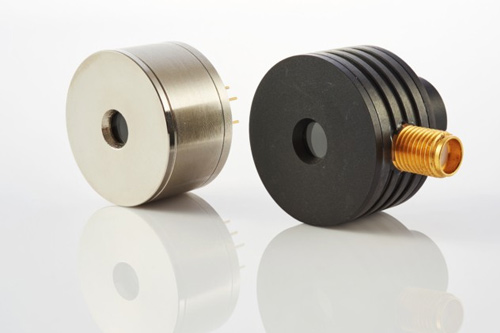
PEM
-
The PEM series detectors operate on the photoelectromagnetic effect in the semiconductors. The devices are typically optimized for the best performance at 10.6 μm.
The detector includes active element based on (HgCd)Te band gap engineered with selected composition and doping profiles, and miniature permanent magnets to produce a magnetic field. The PEM detectors are well suited for heterodyne detection of 10.6 μm radiation. Exhibiting no flicker noise, they can be at the same time used for detection of CW and low frequency modulated radiation in the whole 2 to 11 μm spectral range. Custom devices such as single elements of various sizes, quadrant cells and multielement arrays, various specialized packages and connectors are available upon request. Standard detectors are available in specialized PEM packages (with SMA connectors) with wZnSeAR windows.
- PEM-10.6: Optimal wavelength λopt: 10.6µm, Detectivity D*(λopt): ≥1.0x107cm·Hz1/2/W, Time constant τ: ≤1.2ns
- PEM-10.6: Optimal wavelength λopt: 10.6µm, Detectivity D*(λopt): ≥1.0x107cm·Hz1/2/W, Time constant τ: ≤1.2ns

PEMI
- 2.0 – 12.0 µm, ambient temperature, optically immersed, photoelectromagnetic
PEMI-10.6 is an uncooled HgCdTe photovoltaic optically immersed IR detectors based on photelectromagnetic effect in the semiconductor – spatial separation of optically generated electrons and holes in the magnetic field. The device is designed for the maximum performance at 10.6 µm and especially useful as a large active area detectors to detect CW and low frequency modulated radiation. These device is mounted in specialized packages with incorporated magnetic circuit inside. 3° wedged zinc selenide anti-reflection coated (wZnSeAR) window prevents unwanted interference effects and protects against pollution.
- PEMI-10.6: Optimal wavelength λopt: 10.6µm, Detectivity D*(λopt): ≥1.0x108cm·Hz1/2/W, Time constant τ: ≤1.2n
HgCdTe (MCT) photoconductive detectors

- Photoconductive detectors based on the photoconductive effect. Infrared radiation generates charge carriers in the semiconductor active region decreasing its resistance. The resistance change is sensed as a current change by applying a constant voltage bias. The devices are characterized by near linear current-voltage characteristics. The electric field in photoconductors is constant across the device.
Selected Line
PCI-3TE-12-1×1-TO8-wZnSeAR-36
-
1.0 – 14.0 µm, three-stage thermoelectrically cooled, optically immersed
PCI-3TE-12-1×1-TO8-wZnSeAR-36 is a three-stage thermoelectrically cooled IR photoconductor, based on sophisticated HgCdTe heterostructure for the best performance and stability. The device is optimized for the maximum performance at λopt = 12 µm. Detector element is monolithically integrated with hyperhemispherical GaAs microlens in order to improve performance of the device. Photoconductive detector should operate in optimum bias voltage and current readout mode. Performance at low frequencies is reduced due to 1/f noise. 3° wedged zinc selenide anti-reflection coated (wZnSeAR) window prevents unwanted interference effects.
All HgCdTe (MCT) photoconductive detectors

PC
-
2-11 µm IR PHOTOCONDUCTORS
The PC-λopt (λopt - optimal wavelength in micrometers) feature IR photoconductive detector.
- Material: MCT
- Type: Photoconductive
- Immersion: Non-immersion
- Cooling: No
- Package: BNC T039
- Window: No
This series is easy to use, no cooling or heatsink needed. The devices are optimized for the maximum performance at λopt. Cut-on wavelength is limited by GaAs transmittance (~0.9 µm). Bias is needed to operate photocurrent. Performance at low frequencies (< 20 kHz) is reduced due to 1/f noise. Highest performance and stability are achieved by application of variable gap (HgCd)Te semiconductor, optimized doping and sophisticated surface processing.
Standard detectors are available in TO39 or BNC packages without windows. Various windows, other packages and connectors are available upon request.
- PC-4: Wavelength: 4, Detectivity: ≤2,0x10^9, Time constant: ≤12000
- PC-5: Wavelength: 5, Detectivity: ≤1,0x10^9, Time constant: ≤5000
- PC-6: Wavelength: 6, Detectivity: ≤3,0x10^8, Time constant: ≤500
- PC-9: Wavelength: 9, Detectivity: ≤2,0x10^7, Time constant: ≤10
- PC-10,6: Wavelength: 10,6, Detectivity: ≤9,0x10^6, Time constant: ≤3
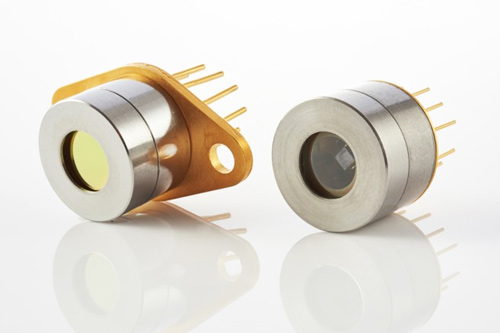
PC-2TE
-
2-13 µm IR PHOTOCONDUCTORS THERMOELECTRICALLY COOLED
- Material: MCT
- Type: Photoconductive
- Immersion: Non-immersion
- Cooling: Two-stage
- Package: TO8, TO66
The PC-2TE-λopt photodetectors series (λopt - optimal wavelength in micrometers) feature IR photoconductive detector on two-stage thermoelectrical cooler. The devices are optimized for the maximum performance at λopt. Cut-on wavelength is limited by GaAs transmittance (~0.9 µm). Bias is needed to operate photocurrent. Performance at low frequencies (<20 kHz) is reduced due to 1/f noise. Highest performance and stability are achieved by application of variable gap (HgCd)Te semiconductor, optimized doping and sophisticated surface processing. Custom devices with quadrant cells, multielement arrays, different windows, lenses and optical filters are available upon request. Standard detectors are available in TO8 packages with wAl2O3 or wZnSeAR windows. Other packages, windows and connectors are also available.
- PC-2TE-4: Wavelength: 4, Detectivity: ≤2,0x10^10, Window: wedged Al₂O₃, Time constant: ≤30000
- PC-2TE-5: Wavelength: 5, Detectivity: ≤1,0x10^10, Window: wedged Al₂O₃, Time constant: ≤20000
- PC-2TE-6: Wavelength: 6, Detectivity: ≤3,0x10^9, Window: wedged ZnSe AR coated, Time constant: ≤4000
- PC-2TE-9: Wavelength: 9, Detectivity: ≤4,5x10^8, Window: wedged ZnSe AR coated, Time constant: ≤40
- PC-2TE-10,6: Wavelength: 10,6, Detectivity: ≤1,4x10^8, Window: wedged ZnSe AR coated, Time constant: ≤10
- PC-2TE-12: Wavelength: 12, Detectivity: ≤4,5x10^7, Window: wedged ZnSe AR coated, Time constant: ≤3
- PC-2TE-13: Wavelength: 13, Detectivity: ≤2,3x10^7, Window: wedged ZnSe AR coated, Time constant: ≤2

PC-3TE
-
2-13 µm IR PHOTOCONDUCTORS THERMOELECTRICALLY COOLED
- Material: MCT
- Type: Photoconductive
- Immersion: Non-immersion
- Cooling: Three-stage
- Package: TO8, TO66
- Window: wedged ZnSe AR coated
The PC-3TE-λopt photodetectors series (λopt - optimal wavelength in micrometers) feature IR photoconductive detector on three-stage thermoelectrical cooler. The devices are optimized for the maximum performance at λopt. Cut-on wavelength is limited by GaAs transmittance (∼0.9 µm). Bias is needed to operate photocurrent. Performance at low frequencies (<20 kHz) is reduced due to 1/f noise. Highest performance and stability are achieved by application of variable gap (HgCd)Te semiconductor, optimized doping and sophisticated surface processing. Custom devices with quadrant cells, multielement arrays, different windows, lenses and optical filters are available upon request. Standard detectors are available in TO8 packages with wZnSeAR windows.. Other packages, windows and connectors are also available.
- PC-3TE-9: Wavelength: 9, Detectivity: ≤1,0x10^9, Window: wedged ZnSe AR coated, Time constant: ≤60
- PC-3TE-10,6: Wavelength: 10,6, Detectivity: ≤2,5x10^8, Window: wedged ZnSe AR coated, Time constant: ≤20
- PC-3TE-12: Wavelength: 12, Detectivity: ≤3,0x10^7, Window: wedged ZnSe AR coated, Time constant: ≤5
- PC-3TE-13: Wavelength: 13, Detectivity: ≤4,5x10^7, Window: wedged ZnSe AR coated, Time constant: ≤4

PC-4TE
-
2-14 µm IR PHOTOCONDUCTORS THERMOELECTRICALLY COOLED
- Material: MCT
- Type: Photoconductive
- Immersion: Non-immersion
- Cooling: Four-stage
- Package: TO8, TO66
- Window: wedged ZnSe AR coated
The PC-4TE-λopt photodetectors series (λopt - optimal wavelength in micrometers) feature IR photoconductive detector on four-stage thermoelectrical cooler. The devices are optimized for the maximum performance at λopt. Cut-on wavelength is limited by GaAs transmittance (∼0.9 µm). Bias is needed to operate photocurrent. Performance at low frequencies (ង kHz) is reduced due to 1/f noise. Highest performance and stability are achieved by application of variable gap (HgCd)Te semiconductor, optimized doping and sophisticated surface processing. Custom devices with quadrant cells, multielement arrays, different windows, lenses and optical filters are available upon request. Standard detectors are available in TO8 packages with wZnSeAR windows. Other packages, windows and connectors are also available.
- PC-4TE-9: Wavelength: 9, Detectivity: ≤2,0x10^9, Window: wedged ZnSe AR coated, Time constant: ≤80
- PC-4TE-10,6: Wavelength: 10,6, Detectivity: ≤3,5x10^8, Window: wedged ZnSe AR coated, Time constant: ≤30
- PC-4TE-12: Wavelength: 12, Detectivity: ≤2,0x10^8, Window: wedged ZnSe AR coated, Time constant: ≤7
- PC-4TE-13: Wavelength: 13, Detectivity: ≤1,0x10^8, Window: wedged ZnSe AR coated, Time constant: ≤6
- PC-4TE-14: Wavelength: 14, Detectivity: ≤6,0x10^7, Window: wedged ZnSe AR coated, Time constant: ≤5

PCI
-
2-11 µm IR PHOTOCONDUCTORS OPTICALLY IMMERSED
- Material: MCT
- Type: Photoconductive
- Immersion: Immersion
- Cooling: No
- Package: BNC T039
- Window: No
The PCI-λopt photodetectors series (λopt - optimal wavelength in micrometers) feature IR photoconductive detector, optically immersed to high refractive index GaAs hyperhemispherical (standard) or hemispherical or any intermediate lens (as option) for different acceptance angle and saturation level. This series is easy to use, no cooling or heatsink needed. The devices are optimized for the maximum performance at λopt. Cut-on wavelength is limited by GaAs transmittance (∼0.9 µm). Bias is needed to operate photocurrent. Performance at low frequencies (<20 kHz) is reduced due to 1/f noise. Highest performance and stability are achieved by application of variable gap (HgCd)Te semiconductor, optimized doping and sophisticated surface processing. Standard detectors are available in TO39 or BNC packages without windows. Various windows, other packages and connectors are available upon request.
- PCI-4: Wavelength: 4, Detectivity: ≤6,0x10^9, Time constant: ≤12000
- PCI-5: Wavelength: 5, Detectivity: ≤4,0x10^9, Time constant: ≤5000
- PCI-6: Wavelength: 6, Detectivity: ≤1,0x10^8, Time constant: ≤500
- PCI-9: Wavelength: 9, Detectivity: ≤1,0x10^8, Time constant: ≤10
- PCI-10,6: Wavelength: 10,6, Detectivity: ≤8,0x10^7, Time constant: ≤3

PCI-2TE
-
2-13 µm IR PHOTOCONDUCTORS THERMOELECTRICALLY COOLED OPTICALLY IMMERSED
- Material: MCT
- Type: Photoconductive
- Immersion: Immersion
- Cooling: Two-stage
- Package: TO8, TO66
The PCI-2TE-λopt photodetectors series (λopt - optimal wavelength in micrometers) feature two-stage thermoelectrical cooler IR photoconductive detector, optically immersed to high refractive index GaAs hyperhemispherical (standard) or hemispherical or any intermediate lens (as option) for different acceptance angle and saturation level. The devices are optimized for the maximum performance at λopt. Cut-on wavelength is limited by GaAs transmittance (∼0.9 µm). Bias is needed to operate photocurrent. Performance at low frequencies (<20 kHz) is reduced due to 1/f noise. Highest performance and stability are achieved by application of variable gap (HgCd)Te semiconductor, optimized doping and sophisticated surface processing. Custom devices with quadrant cells, multielement arrays, different windows, lenses and optical filters are available upon request. Standard detectors are available in TO8 packages with wAl2O3 or wZnSeAR windows. Other packages, windows and connectors are also available.
- PC-2TE-4: Wavelength: 4, Detectivity: ≤4,0x10^10, Window: wedged Al₂O₃, Time constant: ≤30000
- PC-2TE-5: Wavelength: 5, Detectivity: ≤2,0x10^10, Window: wedged Al₂O₃, Time constant: ≤20000
- PC-2TE-6: Wavelength: 6, Detectivity: ≤1,0x10^10, Window: wedged ZnSe AR coated, Time constant: ≤4000
- PC-2TE-9: Wavelength: 9, Detectivity: ≤4,0x10^9, Window: wedged ZnSe AR coated, Time constant: ≤40
- PC-2TE-10,6: Wavelength: 10,6, Detectivity: ≤1,0x10^9, Window: wedged ZnSe AR coated, Time constant: ≤10
- PC-2TE-12: Wavelength: 12, Detectivity: ≤4,5x10^8, Window: wedged ZnSe AR coated, Time constant: ≤3
- PC-2TE-13: Wavelength: 13, Detectivity: ≤2,3x10^8, Window: wedged ZnSe AR coated, Time constant: ≤2

PCI-3TE
-
2-13 µm IR PHOTOCONDUCTORS THERMOELECTRICALLY COOLED OPTICALLY IMMERSED
- Material: MCT
- Type: Photoconductive
- Immersion: Immersion
- Cooling: Three-Stage
- Package: TO8, TO66
- Window: wedged ZnSe AR coated
The PCI-3TE-λopt photodetectors series (λopt - optimal wavelength in micrometers) featureIR photoconductive detector on three-stage thermoelectrical cooler, optically immersed to high refractive index GaAs hyperhemispherical (standard) or hemispherical or any intermediate lens (as option) for different acceptance angle and saturation level. The devices are optimized for the maximum performance at λopt. Cut-on wavelength is limited by GaAs transmittance (∼0.9 µm). Bias is needed to operate photocurrent. Performance at low frequencies (<20 kHz) is reduced due to 1/f noise. Highest performance and stability are achieved by application of variable gap (HgCd)Te semiconductor, optimized doping and sophisticated surface processing. Custom devices with quadrant cells, multielement arrays, different windows, lenses and optical filters are available upon request. Standard detectors are available in TO8 packages with wZnSeAR windows. Other packages, windows and connectors are also available..
- PCI-3TE-9: Wavelength: 9, Detectivity: ≤6,2x10^9, Time constant: ≤60
- PCI-3TE-10,6: Wavelength: 10,6, Detectivity: ≤2,5x10^9, Time constant: ≤20
- PCI-3TE-12: Wavelength: 12, Detectivity: ≤9,0x10^8, Time constant: ≤5
- PCI-3TE-13: Wavelength: 13, Detectivity: ≤4,5x10^8, Time constant: ≤4

PCI-4TE
-
2-14 µm IR PHOTOCONDUCTORS THERMOELECTRICALLY COOLED OPTICALLY IMMERSED
- Material: MCT
- Type: Photoconductive
- Immersion: Immersion
- Cooling: Four-Stage
- Package: TO8, TO66
- Window: wedged ZnSe AR coated
The PCI-4TE-λopt photodetectors series (λopt - optimal wavelength in micrometers) featureIR photoconductive detector on four-stage thermoelectrical cooler, optically immersed to high refractive index GaAs hyperhemispherical (standard) or hemispherical or any intermediate lens (as option) for different acceptance angle and saturation level. The devices are optimized for the maximum performance at λopt. Cut-on wavelength is limited by GaAs transmittance (∼0.9 µm). Bias is needed to operate photocurrent. Performance at low frequencies (<20 kHz) is reduced due to 1/f noise. Highest performance and stability are achieved by application of variable gap (HgCd)Te semiconductor, optimized doping and sophisticated surface processing. Custom devices with quadrant cells, multielement arrays, different windows, lenses and optical filters are available upon request. Standard detectors are available in TO8 packages with wZnSeAR windows. Other packages, windows and connectors are also available.
- PCI-4TE-9: Wavelength: 9, Detectivity: ≤1,0x10^10, Time constant: ≤80
- PCI-4TE-10,6: Wavelength: 10,6, Detectivity: ≤3,0x10^9, Time constant: ≤30
- PCI-4TE-12: Wavelength: 12, Detectivity: ≤2,0x10^9, Time constant: ≤7
- PCI-4TE-13: Wavelength: 13, Detectivity: ≤1,0x10^9, Time constant: ≤6
- PCI-4TE-14: Wavelength: 14, Detectivity: ≤3,0x10^8, Time constant: ≤5
InAs/InAsSb Photovoltaic Detectors

- Photovoltaic detectors (photodiodes) in which the semiconductor layer is made of InAs or InAsSb materials. Absorbed photons produce charge carriers that are collected at the ciodes have complex current voltage characteristics. The devices can operate either at flicker-free zero bias or with reverse voltage. These detectors are cadmium and mercury free. As a result, the detectors comply with the RoHS directive and can be used in the consumer market.
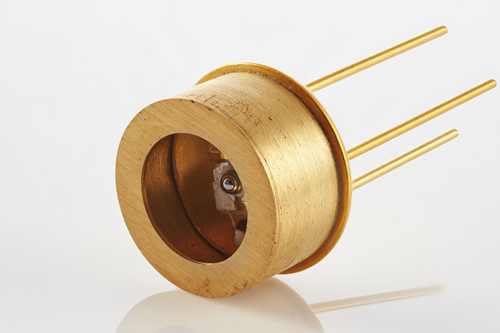
PVA
-
2.0 – 5.5 µm, ambient temperature
PVA is an uncooled IR photovoltaic detector based on InAs alloy. The device is temperature stable up to 300°C and mechanically durable. It do not contain mercury or cadmium and is complying with the RoHS Directive.
Features:
- High performance in the 2.0- 5.5 µm spectral range
- Ambient temperature operation
- Temperature stable up to 300 °C
- Complying with the RoHS Directive
- No bias required
- No 1/f noise
Models:
- PVA-3 Cooling: Uncooled, Immersion: No, Package: TO39, Time constant τ ≤20 ns
- PVA-5 Cooling: Uncooled, Immersion: No, Package: TO39, Time constant τ ≤60 ns

PVA-2TE
-
2.0 – 5.5 µm, two-stage thermoelectrically cooled
PVA-2TE-3 is a two-stage thermoelectrically cooled IR photovoltaic detector based on InAs alloy. The device is temperature stable up to 300°C and mechanically durable. It do not contain mercury or cadmium and is complying with the RoHS Directive. 3° wedged sapphire (wAl2O3) window prevents unwanted interference effects.
Features:
- High performance in the 2.0- 5.5 µm spectral range
- Ambient temperature operation
- Temperature stable up to 300 °C
- Complying with the RoHS Directive
- No bias required
- No 1/f noise
Models:
- PVA-2TE-3 Two-stage TE cooled, Immersion: No, Package: TO8, Time constant τ ≤15 ns
- PVA-2TE-5 Two-stage TE cooled, Immersion: No, Package: TO8, Time constant τ ≤15ns

PVIA
-
2.0 – 5.5 µm, ambient temperature, optically immersed
PVIA-3 is an uncooled IR photovoltaic detector based on InAs alloy, optically immersed in order to improve performance of the device. The detector is temperature stable up to 300°C and mechanically durable. It do not contain mercury or cadmium and is complying with the RoHS Directive.
Features:
- High performance in the 2.0- 5.5 µm spectral range
- Two-stage thermoelectrically cooled
- Temperature stable up to 300 °C
- Complying with the RoHS Directive
- Hyperhemiimmersion microlens technology applied
- No bias required
- No 1/f noise
Models:
- PVA-3 Cooling: Uncooled, Immersion: No, Package: TO39, Time constant τ ≤20 ns
- PVA-5 Cooling: Uncooled, Immersion: No, Package: TO39, Time constant τ ≤60 ns
- PVA-2TE-3 Cooling: Two-stage TE cooled, Immersion: No, Package: TO8, Time constant τ ≤15 ns
- PVA-2TE-5 Cooling: Two-stage TE cooled, Immersion: No, Package: TO8, Time constant τ ≤15 ns
- PVIA-3 Cooling: Uncooled, Immersion: Yes, Package: TO39, Time constant τ ≤20 ns
- PVIA-5 Cooling: Uncooled, Immersion: Yes, Package: TO39, Time constant τ ≤15 ns
- PVIA-2TE-3 Cooling: Two-stage TE cooled, Immersion: Yes, Package: TO8, Time constant τ ≤15 ns
- PVIA-2TE-5 Cooling: Two-stage TE cooled, Immersion: Yes, Package: TO8, Time constant τ ≤5 ns
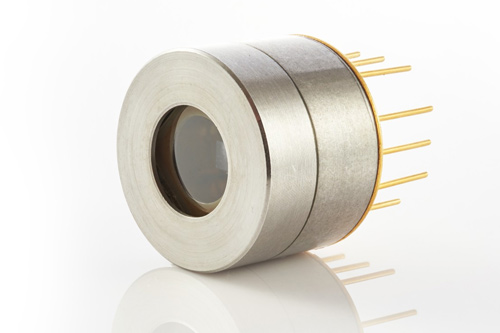
PVIA-2TE
-
2.0 – 3.4 µm, two-stage thermoelectrically cooled
PVIA-2TE-3 is a two-stage thermoelectrically cooled IR photovoltaic detector based on InAs alloy, optically immersed in order to improve performance of the device. The detector is temperature stable up to 300°C and mechanically durable. It do not contain mercury or cadmium and is complying with the RoHS Directive. 3° wedged sapphire (wAl2O3) window prevents unwanted interference effects.
Features:
- High performance in the 2.0- 5.5 µm spectral range
- Two-stage thermoelectrically cooled
- Temperature stable up to 300 °C
- Complying with the RoHS Directive
- Hyperhemiimmersion microlens technology applied
- No bias required
- No 1/f noise
Models:
- PVA-3 Cooling: Uncooled, Immersion: No, Package: TO39, Time constant τ ≤20 ns
- PVA-5 Cooling: Uncooled, Immersion: No, Package: TO39, Time constant τ ≤60 ns
- PVA-2TE-3 Cooling: Two-stage TE cooled, Immersion: No, Package: TO8, Time constant τ ≤15 ns
- PVA-2TE-5 Cooling: Two-stage TE cooled, Immersion: No, Package: TO8, Time constant τ ≤15 ns
- PVIA-3 Cooling: Uncooled, Immersion: Yes, Package: TO39, Time constant τ ≤20 ns
- PVIA-5 Cooling: Uncooled, Immersion: Yes, Package: TO39, Time constant τ ≤15 ns
- PVIA-2TE-3 Cooling: Two-stage TE cooled, Immersion: Yes, Package: TO8, Time constant τ ≤15 ns
- PVIA-2TE-5 Cooling: Two-stage TE cooled, Immersion: Yes, Package: TO8, Time constant τ ≤5 ns
HgCdTe (MCT) Arrays

- Infrared detectors in which the active surface consists of more than two elements. The offer includes quadrant geometry detectors based on photodiodes and photoconductors. Ideally suited for defense and security applications, and XY or differential measurements.

PCQ-10,6
-
- Material: MCT
- Type: Quadrant geometry
- Immersion: Non-immersion
2.0 – 12.0 µm, ambient temperature, multiple junction quadrant
PVMQ-10.6 is an uncooled IR phtovoltaic multiple junction quadrant detector based on sophisticated HgCdTe heterostructures for the best performance and stability. Quadrant detector consists of four separate active elements arranged in a quadrant geometry. The device is optimized for the maximum performance at 10.6 µm. The main application of PVMQ detector is laser beam profiling and positioning.
- Cooling: No
- Wavelength: 10,6
- Package: TO8
- Window: No
- Detectivity: ≥9,0x10^6
- Time constant: ≤5

PVMQ-10,6
-
- Material: MCT
- Type: Quadrant geometry
- Immersion: Non-immersion
1.0 – 12.0 µm, ambient temperature, quadrant
PCQ-10.6 is uncooled IR photoconductive quadrant detector based on sophisticated HgCdTe heterostructures for the best performance and stability. Quadrant detector consists of four separate active elements arranged in a quadrant geometry. The device is optimized for the maximum performance at 10.6 µm. The detector should operate in optimum bias voltage and current readout mode. Performance at low frequencies is reduced due to 1/f noise. The main application of PCQ detectors is laser beam profiling and positioning.
- Cooling: No
- Wavelength: 10,6
- Package: TO8
- Window: No
- Detectivity: ≥1,0x10^7
- Time constant: ≤1,5
Dedicated electronics

- We also offer dedicated electronics to our detectors. Preamplifiers, TEC controllers, power supplies and other accessories.
Selected Line
- Infrared detection module integrates infrared photodetector, signal processing electronics, optics, heat dissipation systems and other components in common package. Products selected on the basis of high functionality and intended for many applications such as leak detection, gas analysis, temperature control for fast moving objects. Additional advantages of integration are improved high-frequency (HF) performance, output signal standardization and miniaturization. Selected Product Line guarantees a short order fulfillment date and an effective price.

UM Series
-
Integration of detector, preamplifier and TEC controller in compact, seald package has important advantages: miniaturization, beter high-frequency performance, immunity to electromagentic interferences (EMI), improved reliability, easy of use and reduced costs.
There are three models in universal module series:
- Optimized for operation in the spectral range of 3 um to 6.7 um and frequency bandwidth from DC to 1 MHz with photovoltaic detector optically immersed .
- Optimized for operation in the spectral range of 2 um to 12 um and frequency bandwidth from DC to 100 MHz with photovoltaic multiple junction detector optically immersed
- Optimized for operation in the same spectral range and the same frequency bandwidth but with photovoltaic multiple junction detector without immersion microlens.
The output signal is standard voltage with a fifty Ohms impedance (50Ω). Additional DC output is available as a standard.

LabM Series
-
Programmable detection modules enable control of many parameters, such as bandwidth and gain, even during normal operation.
This opens up completely new possibilities to designers of measuring systems.
In a fully analogue input circuit, many switching elements are used, even with a variable, digitally-controlled capacitance to compensate the transimpedance input stage.
The internal architecture is similar to standard detection modules. The main difference is that most of the internal functional blocks are configurable.
To provide information about the module status it is equipped with bias and dc offset monitoring circuits. It is possible to build a system with adaptive gain or overload protection. Adjustable bandwidth can help to achieve the best possible noise performance for various signal types.

UHMS Series
-
Many applications require high-time resolution or, equivalently, high frequency-bandwidth optical detection.
For these applications, VIGO developed ultra-high-speed detection modules series.
It was necessary to apply a special design, both in term electronics and mechanics. The system was designed to suport the propagation of high-speed signals, mounting the detector to the enclosure as close ad possible to a PCB board and input circuits. The manufacturing process requires fine tuning of the circuit with a specific detector.
Additionally, it has DC monitor. It is a DC coupled signal, taken directly from the 1st stage preamplifier. One should take into account the 1 VDC offset at the DC monitor output.
This output may be used for:
- measure of the mean optical power by the detector,
- photodetector’s dark current monitoring.
UHSM is the one of the fastest long-wavelength infrared detection modules series on the market.

MicroM Series
-
MicroM is a micro-size detection module with uncooled photovoltaic multiple junction detector. It is optimized for operation in the spectral range from 2 um to 12 µm and frequency bandwidth from DC to 10 MHz
It is easy to assembly in space limited measuring systems of long wavelength infrared applications.
Configurable Line
- A full range of preamplifiers dedicated to each type of VIGO System infrared detectors. The Configurable Line of modules enables the selection of the active area, type of preamplifier and bandwidth of the detection module. This makes it possible to adapt the module to the needs of your own application.
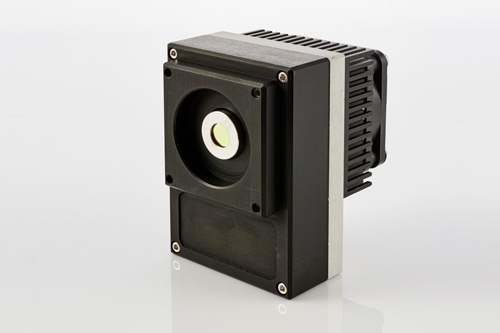
AIP
-
"All-in-one"
Transimpedance preamplifierAIP is a new generation of transimpedance, AC or DC coupled preamplifiers. It is designed to operate with either biased or non-biased VIGO detectors. AIP is „all‑in-one” device – a preamplifier is integrated with a fan and a thermoelectric cooler controller in a compact housing. It is very convenient and user‑friendly device, thus can be easily used in a variety of applications.

FIP
-
Fast
Transimpedance preamplifierFIP is a series of high speed, transimpedance, AC coupled preamplifiers, intended to operate with biased TE cooled VIGO detectors. Fast preamplifier enables precise I-V conversion, detector biasing up to 800 mV and simultaneously maintains compact size and keeps current noise low. FIP is equipped with a fan and does not require additional heat dissipation. It is suitable for applications requiring wide frequency bandwidth. Additional DC output is available as an option
Features:
- Compact size
- Wide bandwidth up to 1 GHz
- Precise I-V conversion
- Detector biasing possibility up to +800 mV
- Low current noise
- Co-operation with high resistance detectors
- Effective cooling up to 4-stage TE coolers
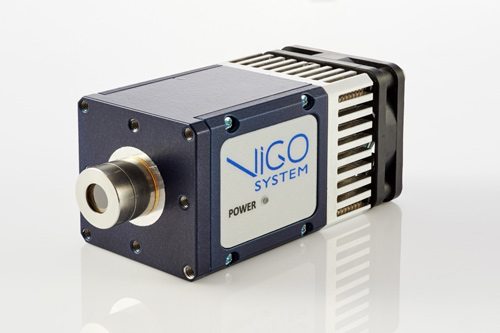
MIP
-
Standard
Transimpedance preamplifierMIP is a series of medium-size transimpedance, DC or AC coupled preamplifiers, intendend to operate with either biased or non-biased VIGO detectors. MIP is equipped with a fan and does not require any additional external heatsink. It is one of the most user-friendly preamplifier which surely facilitate work.
Features:
- Compact size
- High signal-to-noise ratio
- Bandwidth up to 250 MHz
- Dedicated for operation with 2-, 3- and 4-stage TE cooled detectors
- Custom configuration upon request
- Additional accessories available
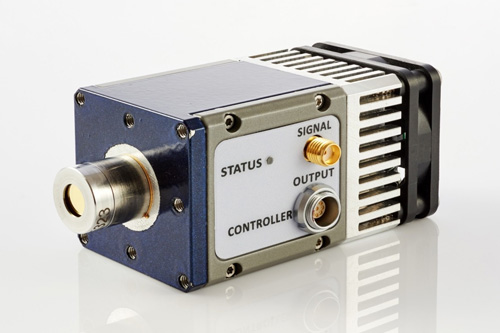
PIP
-
Programmable
Transimpedance preamplifierPIP is a series of programmable “smart” preamplifiers. Due to the modern internal configuration, it offers extreme flexibility combined with superior signal parameters and high reliability. Built-in voltage monitor allows to check and optimize the working conditions (supply voltages, detector bias voltage, first and last stage output voltage offset etc.).
There is also possible to change the gain, coupling (AC/DC), optimize the first stage transimpedance and manually or automatically suppress the voltage offset.
Optimized parameters are stored into the internal EEPROM memory and automatically loaded after the power is on. Reset to default settings is available at any time. For detection module safety detector bias adjusting is blocked by default. User can request to enable this option while ordering.
For proper operation PTCC-01 TEC controller is required.Features:
- Compact size
- High signal-to-noise ratio
- Dedicated for operation with 2-, 3- and 4-stage TE cooled or uncooled detectors
- Parameters settable by the user:
- output voltage offset
- gain (in 40 dB range)
- bandwidth: 150 kHz, 1.5 MHz, 20 MHz, 1.5 MHz, 15 MHz, 200 MHz
- coupling AC/DC
- detector parameters (in some cases, with limitation)
- Programmable modules and programmable controllers are interchangeable
- Highly flexible configuration allows the user to adapt the module to variety of system parameters
- Additional accessories available
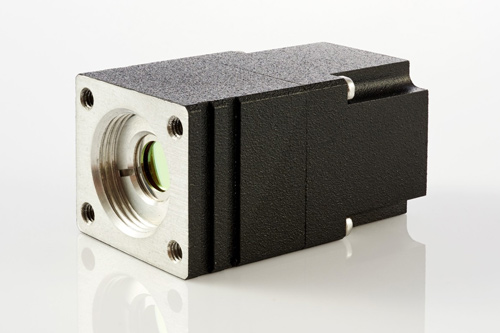
SIP-TO8
-
Small, for TE cooled detectors
Transimpedance preamplifierSIP-TO8 is a series of ultra-small transimpedance, AC or DC coupled preamplifiers. It is designed to operate with either biased or non biased detectors. It is compatible with thermoelectrically cooled detectors in TO8 package. SIP-TO8 is dedicated for OEM applications and requires external heatsink (MHS-2). There is a possibility to adjust gain (devices with a frequency bandwidth up to 100 MHz).
Features:
- Very small size
- High signal-to-noise ratio
- Bandwidth up to 250 MHz
- Dedicated for operation with 2-, 3- and 4-stage TE cooled detectors
- Biased and non-biased detector compatible
- Adjustable gain (for bandwidth up to 100 MHz)
- Fully protected against exceeding supply voltage and reversing power supply polarity
- Custom modifications upon request
- Additional accessories available
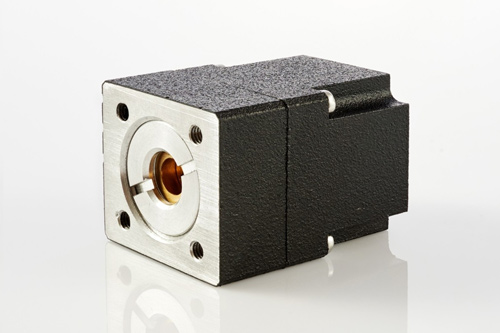
SIP-TO39
-
Small, for TE cooled detectors
Transimpedance preamplifierSIP-TO038 is a series of ultra-small transimpedance, AC or DC coupled preamplifiers. It is designed to operate with either biased or non biased detectors. It is compatible with VIGO thermoelectrically cooled detectors in TO39 package. SIP-TO39 is dedicated for OEM applications and does not require external heatsink. There is a possibility to adjust gain (devices with a frequency bandwidth up to 100 MHz).
Features:
- Very small size
- High signal-to-noise ratio
- Bandwidth up to 250 MHz
- Dedicated for operation with 2-, 3- and 4-stage TE cooled detectors
- Biased and non-biased detector compatible
- Adjustable gain (for bandwidth up to 100 MHz)
- Fully protected against exceeding supply voltage and reversing power supply polarity
- Custom modifications upon request
- Additional accessories available
Accessories
- We offer all the necessary accessories for our products. Electrical accessories such as thermoelectric cooler controllers and preamp power supplies. Mechanical accessories such as brackets for detectors and infrared modules, base mounting systems and cables dedicated to our products.

Preamplifier Power Suply PPS-03
-
Universal
PPS-03 is a small-size, easy to use and universal preamplifier power supply, designed to operate with VIGO detection module microM-10.6 and other devices containing uncooled detectors in TO39 packages and preamplifiers SIP-TO39.
The PPS-03 preamplifier power supply is designed for supplying VIGO System IR Detection Modules included uncooled IR detectors.Features:
- Dedicated for supplying uncooled detectors
- Very small size
- Low cost

Thermoelectric cooler controller PTCC-01
-
Programmable
PTCC-01 is a series of programmable, precision low-noise thermoelectric cooler controllers. They are designed to operate with VIGO IR detection modules: LabM-I-6, LabM-I-10.6 and other devices containing TE cooled detectors and preamplifiers: PIP, MIP, FIP, SIP-TO8.
Available Versions:
PTCC-01-OEM
- TEC controller and preamplifier power supply without housing
- Configurable by PC software available on web page
- Status LED indicator and status/data connector
PTCC-01-BAS
- TEC controller and preamplifier power supply encapsulated in a small size enclosure
- Configurable by PC software available on web page
- Status LED indicator
PTCC-01-ADV
- TEC controller and preamplifier power supply encapsulated in a small size enclosure
- Configurable by build-in function keys or PC software available on web page
- Status indicator LCD
Features:
- Low cost
- Easy to use
- Very small size
- Low power consumption
- High stability and precision
- Dedicated for opeartion with preamplifiers integrated with with 2-, 3-, and 4-stage TE cooled detectors
- Compatible with every variant of programmable preamplifier PIP; user can swap the modules and controllers
- Modern architecture with digitally performed PID temperature control
- Current / voltage / temperature monitor available with PC program
- Overcurrent, overvoltage and overheating protection
- Split grounds and filtering for EMC improvement
- Firmware upgrade option available
- Provides proper detector cooling
- Preamplifier supply included
Applications
INFRARED DETECTORS FOR SECURITY AND DEFENSE APPLICATIONS
- The device will be designed to search places where an explosion, a gas or terrorist attack may occur. Next, the detection system will notify about possible risks or threats
INFRARED DETECTORS FOR RAILWAY TRANSPORT SAFETY
- Safety is the most important aspect of railway transport. Nevertheless every year there are at least few serious accidents in rail traffic.
PLASTIC SORTING USING MID-IR LINEAR DETECTOR ARRAY
- Development of effective methods for the mass production of plastic objects has revolutionized many industries, but what about mass recycling methods?
LASER GAS LEAK DETECTION WITH INFRARED
- VIGO System has developed a unique technology of manufacturing instruments for a quick and convenient detection of a 1 – 16 μm infrared radiation.
MEDICAL SENSOR
- There are commercially available devices that utilize technologies developed by VIGO System. Those are apparatuses for exhaled air analysis.
INDUSTRIAL IR SENSOR
- The detectors are used for monitoring process gases in chemical, refining, power generation, food and aerosol production industries.
AUTOMOTIVE SENSOR
- The unbeatable speed and sensitivity of VIGO System detectors make them useful in applications where the response time is a matter of safety of hundreds of people.
ENVIRONMENTAL SENSOR
- Polish products have already performed well at research centers monitoring the composition of atmosphere, on factory and power plant chimneys, or in unmanned weather balloons.
Epi-wafers: We serve the group III-V semiconductor markets with passion.
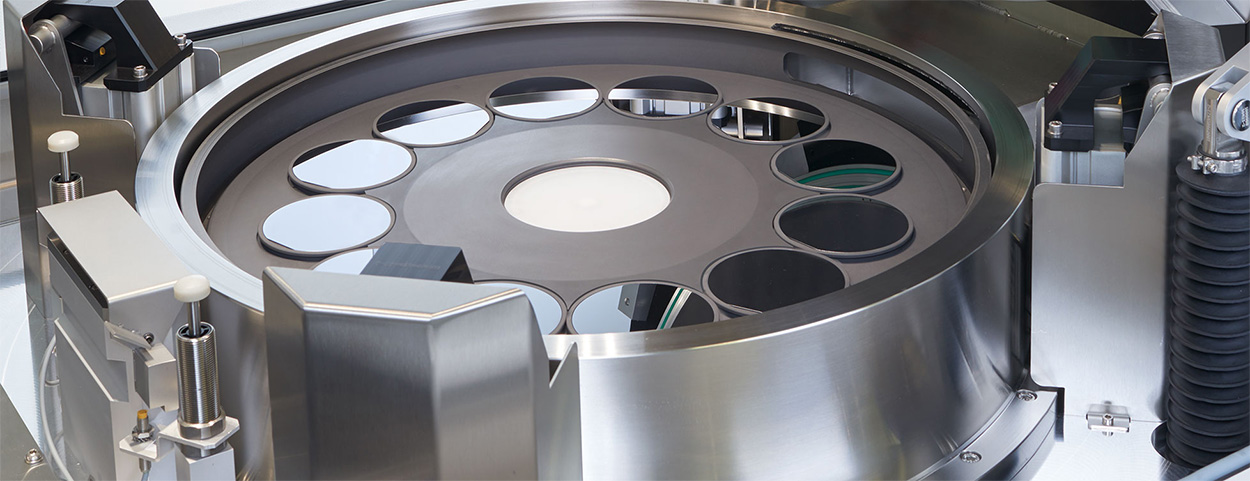
- We manufacture exceptionally high quality III-V epitaxial structures for use in sophisticated electronics such as lasers, photodetectors, transistors, photovoltaic cells and other devices. As one of the few companies on the market, we offer a broad range of high quality epi-wafers, which can be produced both in large volumes as well as in small test batches.

GaAs based products
-
AlGaAs/GaAs:
- QW edge emitting lasers
- VCSELs
- FETs, HEMTs, Schottky diodes
- varactors
GaAsP/GaAs: strained QW edge emitting lasers
InGaAsP/GaAs: QW lasers 808nm
InGaAs/AlGaAs/GaAs: strained QW lasers
InAs/GaAs: QD lasers
AlGaAs/GaAs: passive waveguides
Manufactured to specification

InP based products
-
InGaAsP/InP: strained or matched QW edge emitting lasers and SOAs 1300 - 1600nm
InGaAs/InP: QW edge emitting lasers
InGaAsP/InP: VCSEL structures
InAlGaAs/InP: edge emitting and VCSEL structures
InGaAsP/InP: passive devices
InGaAs: photodetectors
InAlAs/InGaAs/InP: HEMTs
Manufactured to specification
